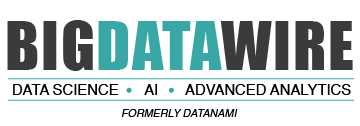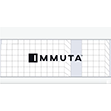

(Rawpixel.com/Shutterstock)
Despite broader access to self-service business intelligence tools, enterprise adoption continues to decline, creating what a new industry survey argues is a growing need for “embedded analytics” in which tools and data are integrated with business applications.
A survey of the state of analytics adoption released this week by business intelligence vendor Logi Analytics also predicts continuing industry consolidation as software vendors acquire analytics companies. That trend underscores the preference for acquiring analytics capabilities rather than building them from scratch.
While more than two-thirds of respondents to the industry survey said they have implemented or have begun rolling out self-service business intelligence tools, the poll found that adoption may have peaked. Paradoxically, user adoption has declined by an estimated 24 percent over the last two years even as access to self-service tools have risen 20 percent over the same period.
Instead, with gaps emerging in current self-service tools, the survey identifies a shift toward embedded analytics tied closely to applications. More than 90 percent of those surveyed said they are either using embedded analytics or are considering it.
“Organizations are seeing the value of including analytics in the apps people are using on a daily basis—in effect, delivering analytics when and where users need it to make decisions,” the survey noted. That trend represents “an exciting revenue opportunity” for independent software vendors, perhaps fueling industry consolidation as software vendors ponder more analytics deals.
“Business users want to stay in one place, not jump from application to application to get what they need. But so many analytics tools fail to meet this need—which may be why low user adoption is an issue,” the survey authors added.
The reasons vary for declining adoption rates for self-service analytics tools. Topping the list is costly maintenance followed by the difficulty of use along with resistance to switching from familiar applications to a separate analytics tool.
Underscoring these problems, the survey found that two-thirds of business users are switching to separate analytics tools to get the data or analysis either “all the time” (16 percent) or “sometimes” (50 percent). “The problem is clear: Switching between apps is a hassle, and it’s inefficient,” the survey authors concluded.
In order to boost adoption, respondents said they want tools that are intuitive along with the flexibility to export data out of a platform to analyze it on preferred tools like good old Excel—described in the report as a “known quantity.” Collaboration tools, connecting to data controlled by the IT department and improved dashboards and other interfaces also ranked near the top of user preferences.
“Business users value connecting to data—and most of all, modifying or changing data,” the survey found. “The more data sources, the merrier!”
You can download a copy of the report here.
Recent items:
Embedded Analytics Upgrade Looks to Bypass IT
July 3, 2025
- FutureHouse Launches AI Platform to Accelerate Scientific Discovery
- KIOXIA AiSAQ Software Advances AI RAG with New Version of Vector Search Library
- NIH Highlights AI and Advanced Computing in New Data Science Strategic Plan
- UChicago Data Science Alum Transforms Baseball Passion into Career with Seattle Mariners
July 2, 2025
- Bright Data Launches AI Suite to Power Real-Time Web Access for Autonomous Agents
- Gartner Finds 45% of Organizations with High AI Maturity Sustain AI Projects for at Least 3 Years
- UF Highlights Role of Academic Data in Overcoming AI’s Looming Data Shortage
July 1, 2025
- Nexdata Presents Real-World Scalable AI Training Data Solutions at CVPR 2025
- IBM and DBmaestro Expand Partnership to Deliver Enterprise-Grade Database DevOps and Observability
- John Snow Labs Debuts Martlet.ai to Advance Compliance and Efficiency in HCC Coding
- HighByte Releases Industrial MCP Server for Agentic AI
- Qlik Releases Trust Score for AI in Qlik Talend Cloud
- Dresner Advisory Publishes 2025 Wisdom of Crowds Enterprise Performance Management Market Study
- Precisely Accelerates Location-Aware AI with Model Context Protocol
- MongoDB Announces Commitment to Achieve FedRAMP High and Impact Level 5 Authorizations
June 30, 2025
- Campfire Raises $35 Million Series A Led by Accel to Build the Next-Generation AI-Driven ERP
- Intel Xeon 6 Slashes Power Consumption for Nokia Core Network Customers
- Equal Opportunity Ventures Leads Investment in Manta AI to Redefine the Future of Data Science
- Tracer Protect for ChatGPT to Combat Rising Enterprise Brand Threats from AI Chatbots
June 27, 2025
- Inside the Chargeback System That Made Harvard’s Storage Sustainable
- What Are Reasoning Models and Why You Should Care
- Databricks Takes Top Spot in Gartner DSML Platform Report
- Why Snowflake Bought Crunchy Data
- LinkedIn Introduces Northguard, Its Replacement for Kafka
- Change to Apache Iceberg Could Streamline Queries, Open Data
- Snowflake Widens Analytics and AI Reach at Summit 25
- Fine-Tuning LLM Performance: How Knowledge Graphs Can Help Avoid Missteps
- Agentic AI Orchestration Layer Should be Independent, Dataiku CEO Says
- Top-Down or Bottom-Up Data Model Design: Which is Best?
- More Features…
- Mathematica Helps Crack Zodiac Killer’s Code
- ‘The Relational Model Always Wins,’ RelationalAI CEO Says
- Confluent Says ‘Au Revoir’ to Zookeeper with Launch of Confluent Platform 8.0
- Solidigm Celebrates World’s Largest SSD with ‘122 Day’
- AI Agents To Drive Scientific Discovery Within a Year, Altman Predicts
- DuckLake Makes a Splash in the Lakehouse Stack – But Can It Break Through?
- The Top Five Data Labeling Firms According to Everest Group
- Supabase’s $200M Raise Signals Big Ambitions
- Toloka Expands Data Labeling Service
- With $17M in Funding, DataBahn Pushes AI Agents to Reinvent the Enterprise Data Pipeline
- More News In Brief…
- Astronomer Unveils New Capabilities in Astro to Streamline Enterprise Data Orchestration
- Databricks Unveils Databricks One: A New Way to Bring AI to Every Corner of the Business
- BigID Reports Majority of Enterprises Lack AI Risk Visibility in 2025
- Seagate Unveils IronWolf Pro 24TB Hard Drive for SMBs and Enterprises
- Astronomer Introduces Astro Observe to Provide Unified Full-Stack Data Orchestration and Observability
- Snowflake Openflow Unlocks Full Data Interoperability, Accelerating Data Movement for AI Innovation
- Gartner Predicts 40% of Generative AI Solutions Will Be Multimodal By 2027
- BigBear.ai And Palantir Announce Strategic Partnership
- Databricks Donates Declarative Pipelines to Apache Spark Open Source Project
- Code.org, in Partnership with Amazon, Launches New AI Curriculum for Grades 8-12
- More This Just In…


























